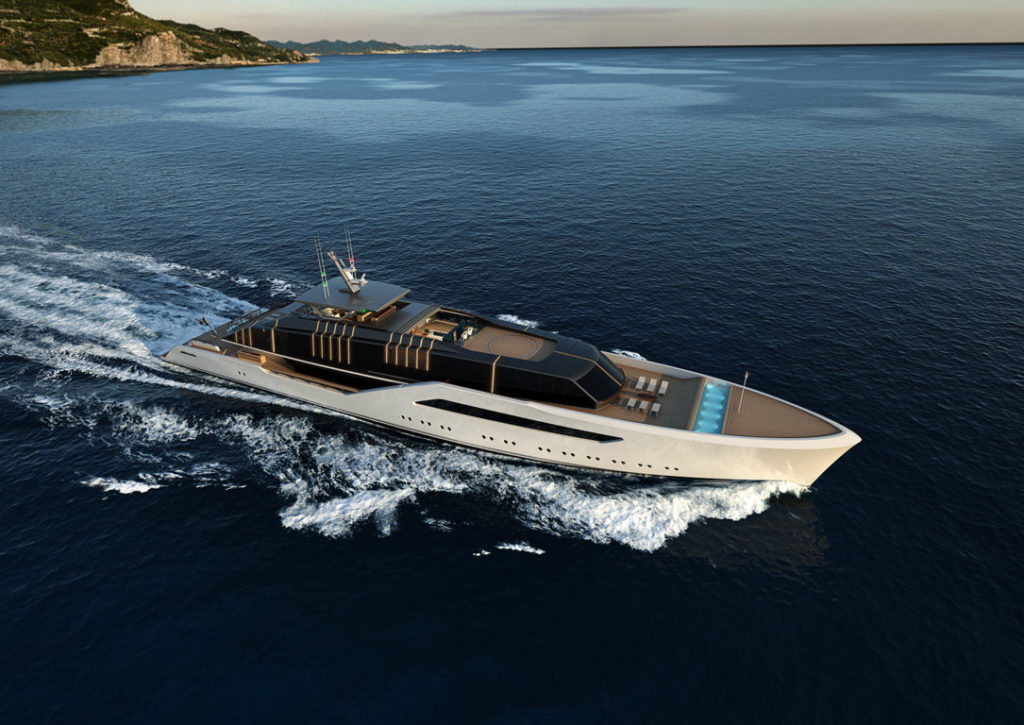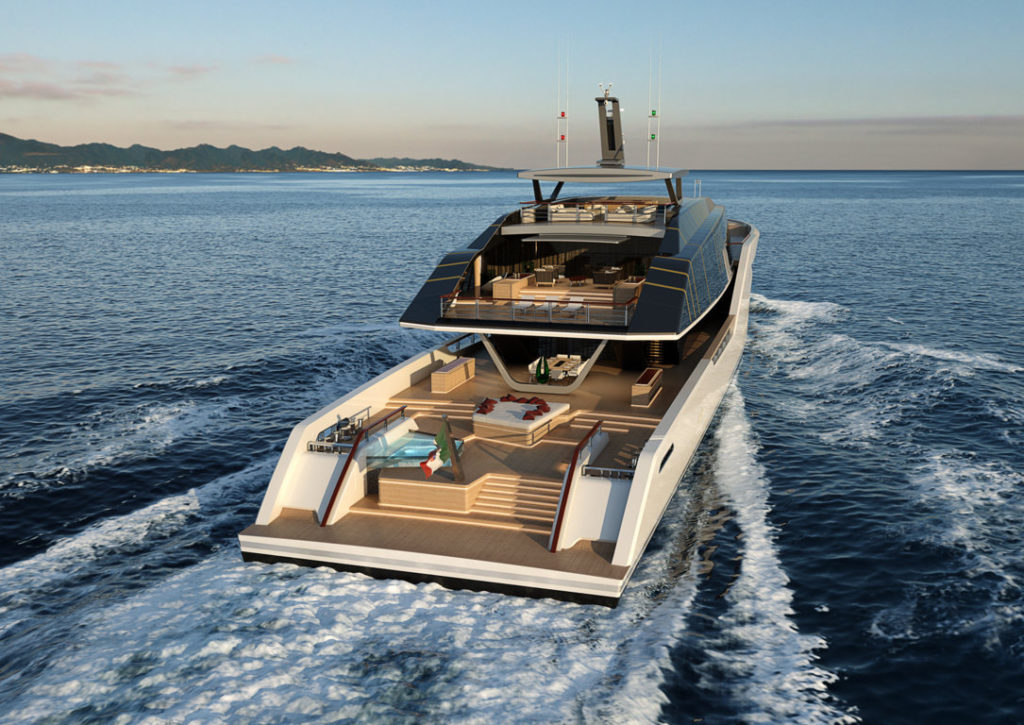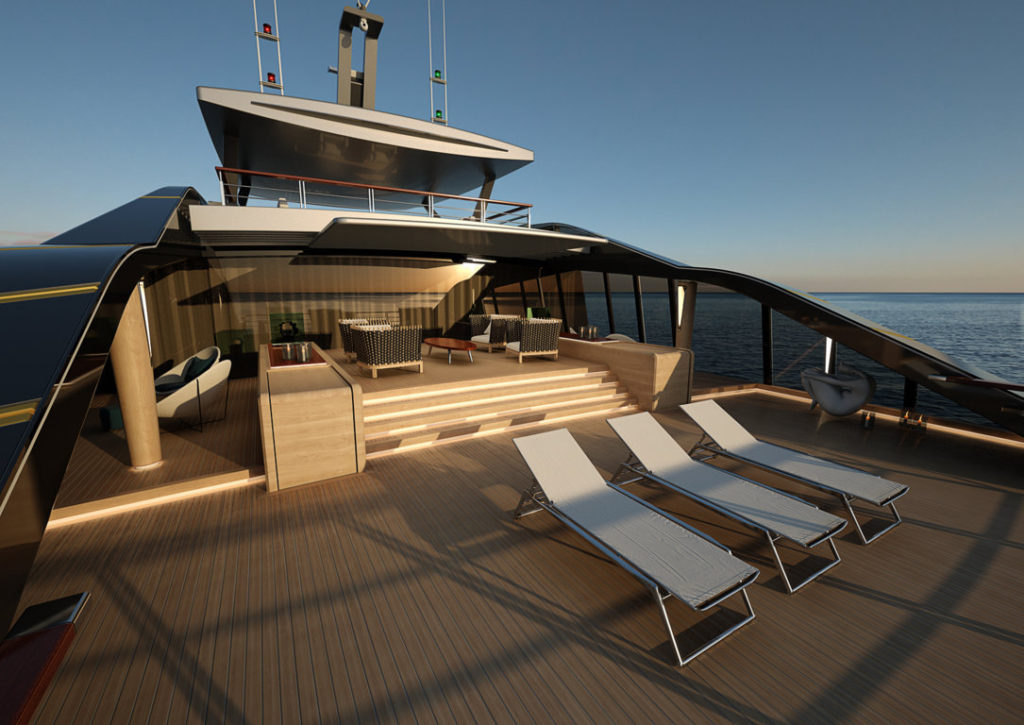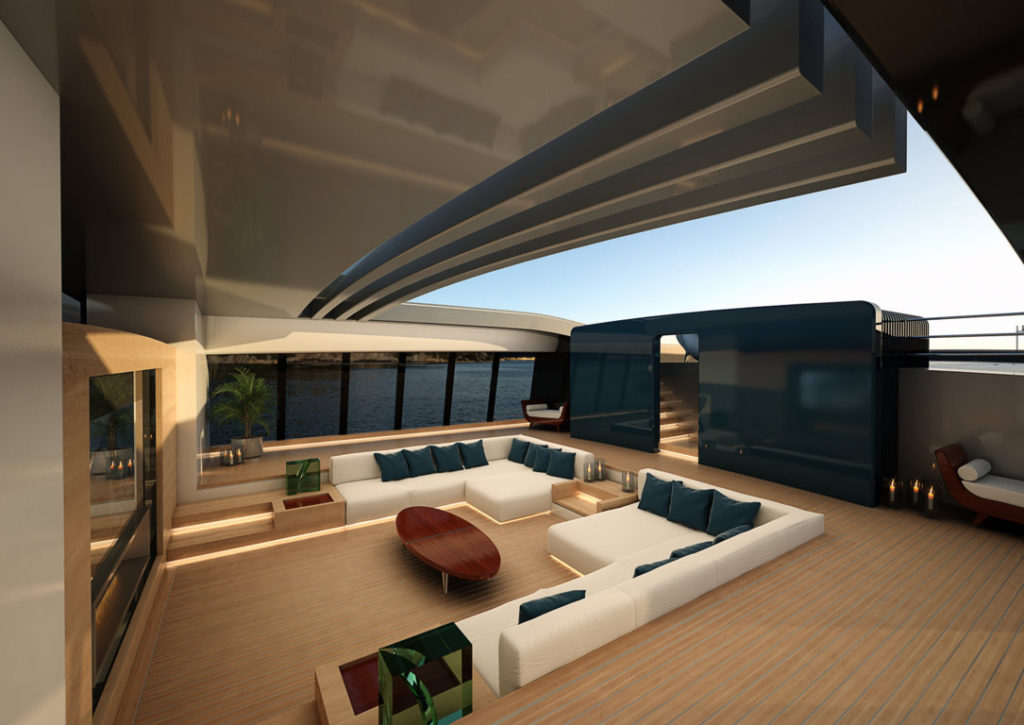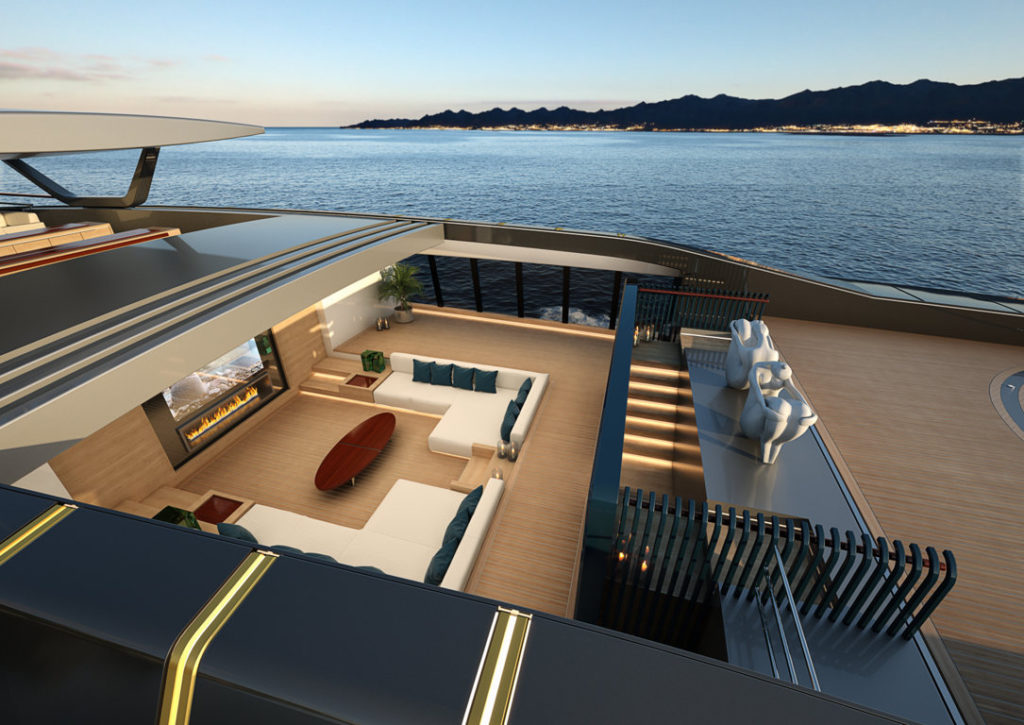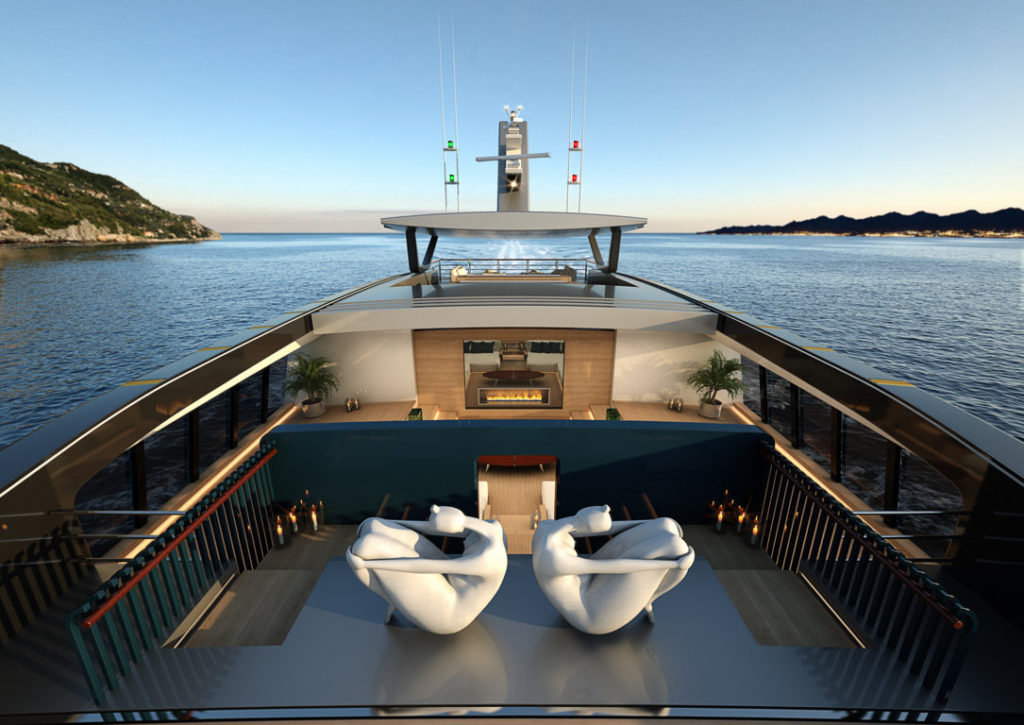Pentagramma concept is a megayacht with low GT, essential lines and a lay out completely dedicated to an innovative rediscovery of the spaces, in particular between exterior and interior. The project has been unveiled today by its designer Luca Vallebona, the signature behind the exteriors and interiors of the 42m megayacht Serenity (Mondomarine, 2015).
The exterior is very low on the water and designed to emphasise the main elements of the constuction: hull and superstucture. The yacht’s perception at anchor is clear and the proportions, in some way, respect the surrounding, being low on the horizon.
When approaching, vice versa, the aesthetical perception changes. The superstructure’s details become visible and tell the compositive method that gave the name Pentagramma to the yacht. Playing on the structural grid with different modular glass panels and vertical backlit brass inserts it is possible to change, endlessly, the composition of this part in the same way the 7 notes of the pentagramme can transmit endless melodies and emotions.
The hull/superstructure perception is dual. When you see it from far away it is extremely simple, while when you are closer it is rich of details and variations that create a hidden and elegant exterior. The brass use is a tribute to this old material of the sea world.
The white hull, in opposition to the dark superstructure, has an open stern with an asymmetrical lay out that goes slowly down to the bath platform, reducing the “wall effect” when watching from the aft and connecting easily the guest to the water. The beach area is exposed to the natural elements and immersed in the surroundings, overcoming the classic idea of the enclosed beach too similar to a tender garage.
Hidden awnings create light shadows in a various and unexpected space. The deck symmetry, going ideally from outboard to the centerline, dissolves spontaneously, creating the “cavea” organized with a pool and a big sunpad and, consequentely, leaving the guests move free from rigid schemes. The beach area is directly connected to the guests’ cabins, located into the lower deck, through a hidden hinged deck door.
This door allows using external and internal spaces, increasing the possibilities of moving between decks and breaking physically the limits existing today aboard the big yachts. Often we hear talking about the extensive use of glass as the solution to the request of higher relations between exterior and interior…but this is not enough.
Pentagramma creates not only a visual connection with the surroundings but also a new standard, by increasing the connections among the decks and the closed and open areas.
From the cabins area the guests can directly go to the aft open deck without going trough the corridors, stairs and lounges. They can wake up and have a bath few seconds later while the crew prepare the breakfast in the room close to the beach area.
The Owner and guests can land with the helicopter on the sundeck above the bridge where an important architectural and symbolic element is introduced: the “door”. This “door” is opened in a free blue wall that hides two stairs that connect the helipad to the semi-open but protected “court”, a second architectural element that is the exclusive heart of the yacht. Here a cosy al fresco lounge, a bit lower than the relative half deck, leads, going aft, to the cinema and, going fwd, to the gym and sauna area. This “court” is an inusual and poetic space, a pause in the yacht core, protected by unwelcome eyes and switching between outdoor and indoor activities.
Sunshades and a retractile awning protect from the sun in the hottest hours while the lateral folding up glasses can give a pleasant natural ventilation.
The interior expands vertically, raising 3-meter high in the main deck saloon. From here, a dedicated and special corridor leads to the Owner’s apartment. On the left it is regular and orthogonal and on the right it curves smoothly to create a real art gallery in a syncopate space. The classic and boring corridor becomes a special architectural element that vibrates, an experience in itself.
The corridor becomes a place where artworks and, at the same time, the art of space can be admired. A hidden door connects this corridor/gallery to the owner’s balcony on stbd through a small “secret bar” where the crew can prepare separetely the breakfast or a coffee only for the owner. This small space recalls the old service spaces and passages of the ancient European buildings, areas that are architectural small jewels (often) with particular shapes and intelligent use.
Coming back to the lower deck we can find a spa area with hamman and massage rooms and a connected diving area with a special looking submarine garage and bar. A glassed corridor overlooks the engine room that connects these spaces to the guests cabins.
The pod propulsion has a diesel electric system that avoids vibrations and noise and moves the guest cabins aft. Also in this case it recalls the layout of the big yachts of some decade ago.
Vice versa, the antennas are hidden and integrated in the rooftop so the mast is smaller and the lines cleaner, a tribute of Pentagramma to the new technologies.



